
There’s a subtle difference, but does it still bring the flavor?
Since moving to Korea a year ago, our Japanese-language reporter Soon Pyon’s noticed a lot of snacks, restaurants, and more that remind him of things he had growing up in Japan. Recently, during a particularly intense craving for ramen, he noticed a restaurant that looked quite similar to a popular Japanese ramen chain called Ramen Jiro.
▼ The restaurant Soon Pyon’s found in Korea
▼ A Ramen Jiro branch in Japan
The restaurant in Korea said ラーメン次郎 on its sign, just like branches of the Japanese chain do on theirs. There was a very subtle difference, though: the Korean restaurant is called “Koi Ramen Jiro,” the name of the company being “Koi Ramen,” and it’s apparently a Korean-born chain restaurant. As of 2022, there are 29 Koi Ramen joints in South Korea. Slightly confusing, but Soon Pyon’s decided to go with it anyway.
Ramen Jiro-style ramen (called “Jiro-kei” in Japan) has a mixed soy sauce/tonkotsu (pork stock) soup base and thick noodles topped with a small mountain of beans sprouts, pork, and cabbage. Looking at Koi Ramen Jiro’s menu, Soon Pyon’s could see right away that the Korean restaurant offered something very similar.
But unlike Japan’s Ramen Jiro, Koi Ramen Jiro’s menu was a bit all over the place.
▼ The other dishes shown here aren’t so Jiro-kei-y.
Koi Ramen Jiro’s signature ramen uses a thick tonkotsu pork broth, without any of the soy sauce broth that authentic Japanese Jiro-kei ramen has. Koi Ramen Jiro also had other menu items like Taiwan-style Mazesoba (basically noodles that you mix up with a variety of toppings).
The interior reminded Soon Pyon’s of a ramen shop he’d see somewhere in, say, Europe; it was set up like a Japanese ramen joint with both counter and table seats, but the walls were plastered with all kinds of Japanese paraphernalia.
They even had manga lined up over the counter, but it looked more like it was for interior decoration than for actual reading. Worst was a good one, Soon Pyon’s reminisced.
Like many ramen restaurants in Japan, Koi Ramen Jiro had a ticket vending system, so he inserted his money into the machine and placed his order. Oddly enough, despite the restaurant’s name, the first ramen listed on Koi Ramen Jiro’s menu isn’t their take on Jiro-kei, but is instead Koi Ramen’s standard signature tonkotsu pork ramen, so Pyon Soon’s decided to order a bowl of that for 9,000 won [US$6.74]), plus a side of fried gyoza for 4,000 won. The prices were about the same as Japan, and you were even able to choose toppings and the firmness of your noodles.
After a few minutes, his ramen was served to him, and it looked just like Japanese tonkotsu ramen! It was topped with green onions, a soft-boiled egg, and chashu pork cutlets. Time for the broth’s taste test.
He thought it was great! It wasn’t as salty as he was accustomed to, but besides that, it was just as delicious and comforting as a bowl he’d find in Japan.
The noodle were slightly too soft for Soon Pyon’s taste, but he could also mark that down to personal preference. Otherwise, no complaints.
As for the chashu, it tasted like a ready-made cutlet rather than one prepared at the restaurant. It didn’t mean it wasn’t good, but it was worth noting for him.
And finally, the gyoza. He expected them to be Japanese-style gyoza as well, but they were basically Korean-style ones, or mandu. Not bad, but not what he expected.
Overall, he was pleased with his experience at Koi Ramen Jiro. After more research, he found out that only two Koi Ramen locations, including the one he visited, actually serve ramen with Jiro-kei-style toppings. The other branches are simply called “Koi Ramen” and are mainly known for their tonkotsu ramen.
Soon Pyon’s also thinks it’s worth noting that the same tonkotsu broth is also used for the restaurant’s Jiro-kei topping ramen. So if you’re looking for an authentic Jiro Ramen experience in Korea, you’d be better off searching elsewhere, but if you’re looking for Japanese-style tonkotsu despite the doctor’s orders? This is the place.
Ramen Jiro exterior photo: Wikipedia/カレンダーの可憐
All other photos ©SoraNews24
● Want to hear about SoraNews24’s latest articles as soon as they’re published? Follow us on Facebook and Twitter!
[ Read in Japanese ]
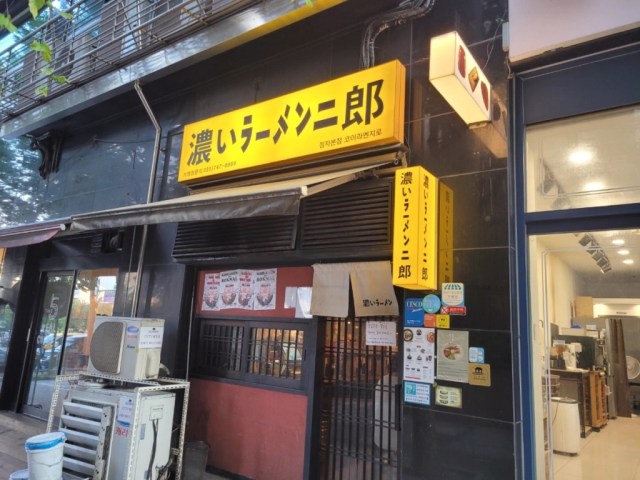
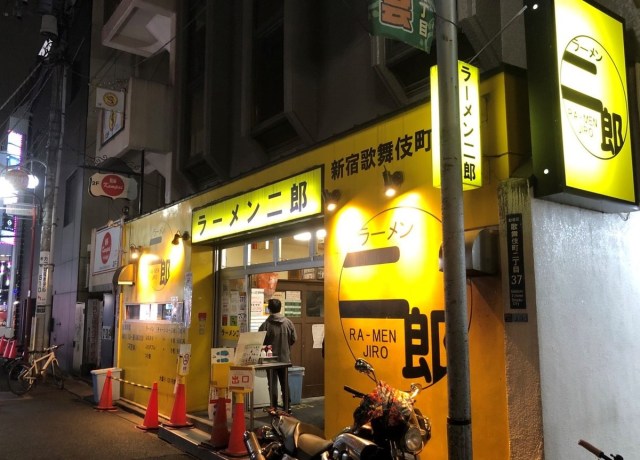
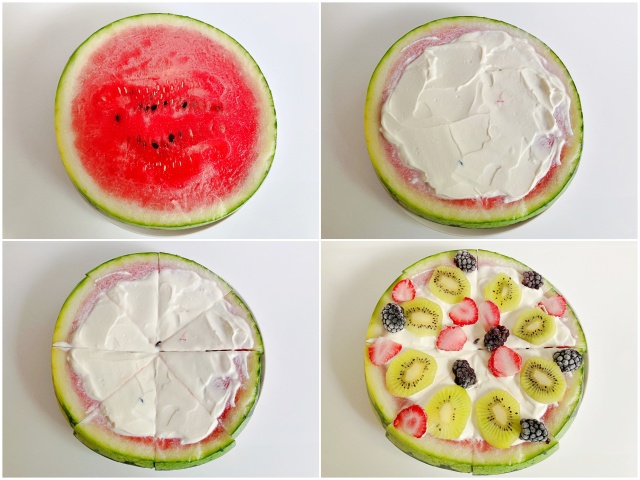
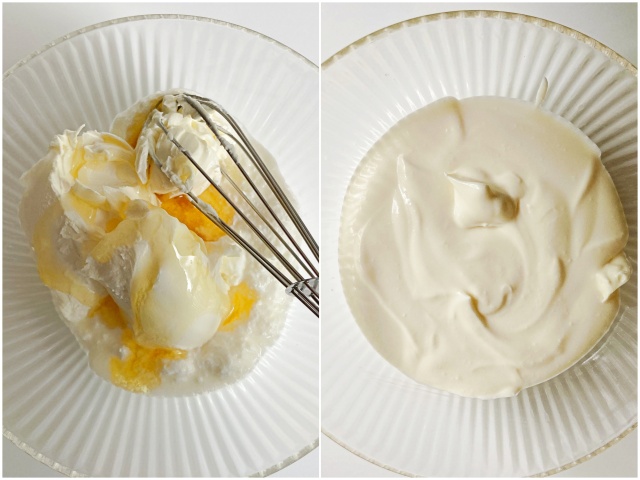






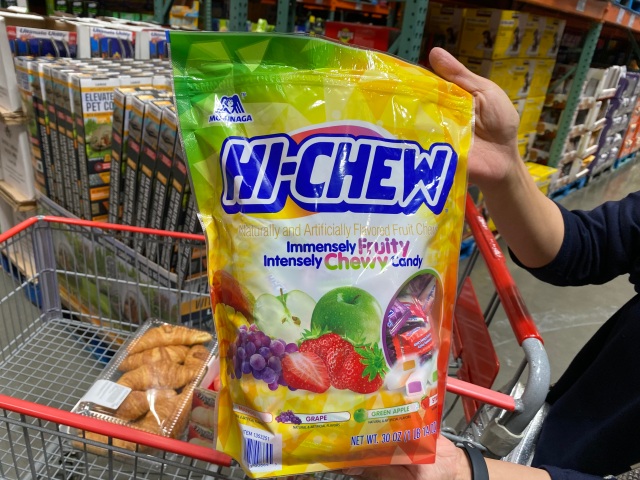

 Low-carb, noodle-free ramen is still awesome, this Yokohama-style chain proves
Low-carb, noodle-free ramen is still awesome, this Yokohama-style chain proves Is ramen without the “men” a Tokyo dining paradox worth experiencing?【Taste test】
Is ramen without the “men” a Tokyo dining paradox worth experiencing?【Taste test】 Clear tonkotsu ramen becomes a cult hit at “Ramen Runway” in Japan
Clear tonkotsu ramen becomes a cult hit at “Ramen Runway” in Japan Ramen broth, but without ramen noodles? Japan’s Nadai Fujisoba takes soba to a bold new place
Ramen broth, but without ramen noodles? Japan’s Nadai Fujisoba takes soba to a bold new place Ramen pizza gets a sinful upgrade with Jiro-style version from Pizza Hut Japan
Ramen pizza gets a sinful upgrade with Jiro-style version from Pizza Hut Japan Japanese beef bowl chain Sukiya’s 2026 Smile Box lucky bag basically pays for itself
Japanese beef bowl chain Sukiya’s 2026 Smile Box lucky bag basically pays for itself Cup Noodle tries an authentic Jiro-style ramen, but something’s not quite right
Cup Noodle tries an authentic Jiro-style ramen, but something’s not quite right Play games, learn, and get your fortune at Ginza’s limited-time Tsunaguu “Shrine of the Future”
Play games, learn, and get your fortune at Ginza’s limited-time Tsunaguu “Shrine of the Future” One of Japan’s rarest sweets is a sell-out hit that looks and tastes like frost
One of Japan’s rarest sweets is a sell-out hit that looks and tastes like frost We revisited Sweets Paradise after a decade to see if Japan’s dessert buffet still delivers
We revisited Sweets Paradise after a decade to see if Japan’s dessert buffet still delivers What did Shibuya really look like after the crowds on New Year’s Day?
What did Shibuya really look like after the crowds on New Year’s Day? Shrimp nuggets returning to McDonald’s Japan menu with a special surprise
Shrimp nuggets returning to McDonald’s Japan menu with a special surprise Combining all of Nissin’s new Cup Noodle series into one powerful bowl of ramen
Combining all of Nissin’s new Cup Noodle series into one powerful bowl of ramen Pizza Hut Japan’s hot lucky bags are perfect for a New Year’s pizza party
Pizza Hut Japan’s hot lucky bags are perfect for a New Year’s pizza party That time Seiji called JASRAC to ask why he didn’t get paid royalties for his song being on TV
That time Seiji called JASRAC to ask why he didn’t get paid royalties for his song being on TV Starbucks Japan ready to get Year of the Horse started with adorable drinkware and plushies【Pics】
Starbucks Japan ready to get Year of the Horse started with adorable drinkware and plushies【Pics】 7 great places to see Mt. Fuji from without having to climb it
7 great places to see Mt. Fuji from without having to climb it Cyberpunk anime meets traditional culture in Ghost in the Shell gold leaf Japanese changing screens
Cyberpunk anime meets traditional culture in Ghost in the Shell gold leaf Japanese changing screens Hayao Miyazaki says Happy New Year to Studio Ghibli fans with new art for Year of the Horse
Hayao Miyazaki says Happy New Year to Studio Ghibli fans with new art for Year of the Horse Hello Kitty Choco Egg figures are an adorable trip through three periods of Japanese pop culture【Pics】
Hello Kitty Choco Egg figures are an adorable trip through three periods of Japanese pop culture【Pics】 We found possibly the quietest Japanese-style hotel in Tokyo’s bustling Shinjuku district
We found possibly the quietest Japanese-style hotel in Tokyo’s bustling Shinjuku district 7-Eleven Japan’s ramen-cooking robot whipped us up a bowl of noodles【Taste test】
7-Eleven Japan’s ramen-cooking robot whipped us up a bowl of noodles【Taste test】 Sumo Sanrio! Hello Kitty and pals team up with Japan Sumo Association for new merch【Pics】
Sumo Sanrio! Hello Kitty and pals team up with Japan Sumo Association for new merch【Pics】 Japan’s oldest largetooth sawfish in captivity back on display in Mie Prefecture
Japan’s oldest largetooth sawfish in captivity back on display in Mie Prefecture More Than a Capsule Stay: Why Solo Travelers Choose “global cabin Yokohama Chinatown”
More Than a Capsule Stay: Why Solo Travelers Choose “global cabin Yokohama Chinatown” 7-Eleven Japan starts new temporary luggage storage service in over 300 branches
7-Eleven Japan starts new temporary luggage storage service in over 300 branches Disillusionment at Tsukiji’s tourist-target prices led us to a great ramen restaurant in Tokyo
Disillusionment at Tsukiji’s tourist-target prices led us to a great ramen restaurant in Tokyo Starbucks teams up with 166-year-old Kyoto doll maker for Year of the Horse decorations【Photos】
Starbucks teams up with 166-year-old Kyoto doll maker for Year of the Horse decorations【Photos】 Tokyo considering law requiring more trash cans following litter increase in heavily touristed area
Tokyo considering law requiring more trash cans following litter increase in heavily touristed area Tokyo’s Tsukiji sushi neighborhood asks tour groups to stay away for the rest of the month
Tokyo’s Tsukiji sushi neighborhood asks tour groups to stay away for the rest of the month Tokyo event lets you travel back in time, for free, to celebrate 100 years since Showa era start
Tokyo event lets you travel back in time, for free, to celebrate 100 years since Showa era start Sanrio theme park in Japan announces plans to expand into a Sanrio resort
Sanrio theme park in Japan announces plans to expand into a Sanrio resort Japan may add Japanese language proficiency, lifestyle classes to permanent foreign resident requirements
Japan may add Japanese language proficiency, lifestyle classes to permanent foreign resident requirements Stamina-destroying “Paralysis Noodles” are Tokyo’s newest over-the-top ramen innovation
Stamina-destroying “Paralysis Noodles” are Tokyo’s newest over-the-top ramen innovation Survey asks foreign tourists what bothered them in Japan, more than half gave same answer
Survey asks foreign tourists what bothered them in Japan, more than half gave same answer Japan’s human washing machines will go on sale to general public, demos to be held in Tokyo
Japan’s human washing machines will go on sale to general public, demos to be held in Tokyo Japan’s deadliest food claims more victims, but why do people keep eating it for New Year’s?
Japan’s deadliest food claims more victims, but why do people keep eating it for New Year’s? We deeply regret going into this tunnel on our walk in the mountains of Japan
We deeply regret going into this tunnel on our walk in the mountains of Japan Studio Ghibli releases Kodama forest spirits from Princess Mononoke to light up your home
Studio Ghibli releases Kodama forest spirits from Princess Mononoke to light up your home Major Japanese hotel chain says reservations via overseas booking sites may not be valid
Major Japanese hotel chain says reservations via overseas booking sites may not be valid Put sesame oil in your coffee? Japanese maker says it’s the best way to start your day【Taste test】
Put sesame oil in your coffee? Japanese maker says it’s the best way to start your day【Taste test】 No more using real katana for tourism activities, Japan’s National Police Agency says
No more using real katana for tourism activities, Japan’s National Police Agency says Starbucks Japan reveals new sakura drinkware collection, inspired by evening cherry blossoms
Starbucks Japan reveals new sakura drinkware collection, inspired by evening cherry blossoms Updated cherry blossom forecast shows extra-long sakura season for Japan this year
Updated cherry blossom forecast shows extra-long sakura season for Japan this year Want some great ramen in Akihabara? Then head to this…karaoke joint?!?
Want some great ramen in Akihabara? Then head to this…karaoke joint?!? Instant vs. Restaurant Ramen Project: Ippudo spicy miso tonkotsu battle【Taste test】
Instant vs. Restaurant Ramen Project: Ippudo spicy miso tonkotsu battle【Taste test】 Is Jiro-style ramen takeout from the supermarket as good as the real deal?
Is Jiro-style ramen takeout from the supermarket as good as the real deal? Does Ippudo’s new plant-based tonkotsu ramen really taste like pork?
Does Ippudo’s new plant-based tonkotsu ramen really taste like pork? We visit the Paris branch of Japanese ramen chain Ippudo and eat the most unusual ramen
We visit the Paris branch of Japanese ramen chain Ippudo and eat the most unusual ramen Does Harajuku’s ramen restaurant with a constant line live up to the hype? Let’s find out!
Does Harajuku’s ramen restaurant with a constant line live up to the hype? Let’s find out! Japanese ramen cocktail uses tonkotsu pork broth for alcoholic noodle flavour
Japanese ramen cocktail uses tonkotsu pork broth for alcoholic noodle flavour Some of the most delicious ramen I’ve had in months…is at a restaurant in Las Vegas?!?
Some of the most delicious ramen I’ve had in months…is at a restaurant in Las Vegas?!? Tonkotsu ramen rice bowl blows our minds, makes us appreciate noodles in a new light
Tonkotsu ramen rice bowl blows our minds, makes us appreciate noodles in a new light Ippudo serves up plant-based tonkotsu ramen in Japan for a limited time
Ippudo serves up plant-based tonkotsu ramen in Japan for a limited time Does Japan’s “Stinky but Tasty” tonkotsu ramen live up to its name?
Does Japan’s “Stinky but Tasty” tonkotsu ramen live up to its name? How to make tonkotsu ramen at home 【SoraKitchen】
How to make tonkotsu ramen at home 【SoraKitchen】 Tonkotsu ramen potato chips coming from Japan’s most popular Hakata ramen chain
Tonkotsu ramen potato chips coming from Japan’s most popular Hakata ramen chain Tokyo ramen restaurant apologizes for trying to set too-strict time limit for eating its noodles
Tokyo ramen restaurant apologizes for trying to set too-strict time limit for eating its noodles Catch! Noodles and bowls fly through the air at this Japanese ramen restaurant
Catch! Noodles and bowls fly through the air at this Japanese ramen restaurant Akihabara ramen restaurant becomes a hit with foreign tourists
Akihabara ramen restaurant becomes a hit with foreign tourists
Leave a Reply